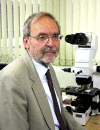Classification of lymphoid neoplasms: the microscope as a tool for disease discovery
- PMID: 19029456
- PMCID: PMC2954680
- DOI: 10.1182/blood-2008-07-077982
Classification of lymphoid neoplasms: the microscope as a tool for disease discovery
Abstract
In the past 50 years, we have witnessed explosive growth in the understanding of normal and neoplastic lymphoid cells. B-cell, T-cell, and natural killer (NK)-cell neoplasms in many respects recapitulate normal stages of lymphoid cell differentiation and function, so that they can be to some extent classified according to the corresponding normal stage. Likewise, the molecular mechanisms involved the pathogenesis of lymphomas and lymphoid leukemias are often based on the physiology of the lymphoid cells, capitalizing on deregulated normal physiology by harnessing the promoters of genes essential for lymphocyte function. The clinical manifestations of lymphomas likewise reflect the normal function of lymphoid cells in vivo. The multiparameter approach to classification adopted by the World Health Organization (WHO) classification has been validated in international studies as being highly reproducible, and enhancing the interpretation of clinical and translational studies. In addition, accurate and precise classification of disease entities facilitates the discovery of the molecular basis of lymphoid neoplasms in the basic science laboratory.
Figures







References
-
- Swerdlow SH, Campo E, Harris NL, et al. WHO Classification of Tumours of Haematopoietic and Lymphoid Tissues. 4th ed. Lyon, France: International Agency for Research on Cancer; 2008.
-
- Jaffe ES, Bookman MA, Longo DL. Lymphocytic lymphoma of intermediate differentiation–mantle zone lymphoma: a distinct subtype of B-cell lymphoma. Hum Pathol. 1987;18:877–880. - PubMed
-
- Stein H, Mason DY, Gerdes J, et al. The expression of the Hodgkin's disease associated antigen Ki-1 in reactive and neoplastic lymphoid tissue: evidence that Reed-Sternberg cells and histiocytic malignancies are derived from activated lymphoid cells. Blood. 1985;66:848–858. - PubMed
Publication types
MeSH terms
LinkOut - more resources
Full Text Sources
Other Literature Sources
Miscellaneous

